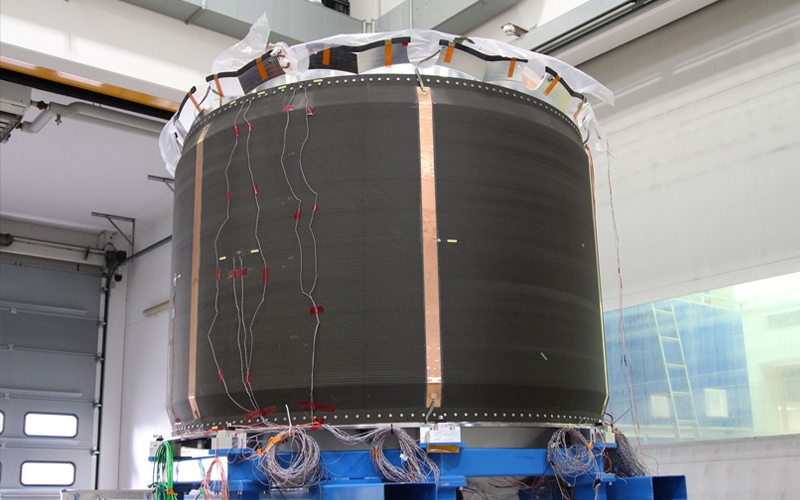
The European Space Agency and MT Aerospace have successfully completed an initial test campaign of a fuel tank that will be utilized aboard an upgraded Ariane 6 upper stage.
With the aim of increasing the performance of the Ariane 6 launch vehicle, work on the Innovative Carbon ARiane Upper Stage (Icarus) began in May 2019. The stage will be lighter than the standard Ariane 6 upper stage that will initially be used aboard the vehicle when it is debuted in 2024. The reduced weight will enable the rocket to offer a greater payload capacity.
ArianeGroup was selected as the prime contractor to develop a demonstrator of the stage called Phoebus. The company subcontracted MT Aerospace to produce the carbon fiber-reinforced plastic tanks that will be utilized to store liquid hydrogen and liquid oxygen that would power the Ariane 6 Vinci upper-stage engine.
In late October, ESA announced that the agency and MT Aerospace had begun testing the first component of the stage, a liquid oxygen tank.
Testing began with the tank being filled with room-temperature helium to ensure there weren’t any leaks. Liquid nitrogen was then used to sustain cryogenic temperature and pressure. According to MT Aerospace, the tank was testing up to 13 bar with liquid nitrogen at temperatures of around -196°C.
With the successful completion of these initial tests, MT Aerospace and ESA can now commence the next phase of testing, which will involve filling the tank with liquid oxygen. This phase of testing will be conducted at a Rheinmetall military test site in Unterlüß, Germany. According to Kate Underhill, the ESA lead engineer on the project, the location was chosen as the site is “used to handling explosions.” “When working with liquid oxygen, if things go wrong, they go wrong very quickly,” explained Underhill.
The second phase of testing is expected to be completed in around three weeks. Once this final phase of testing is complete, the tank will be transported back to MT Aerospace headquarters in Augsburg.
Testing of the hydrogen tank for Phoebus is expected to begin in 2024. This will then be followed by testing of a full-scale structural demonstrator of the upper stage in 2025.




